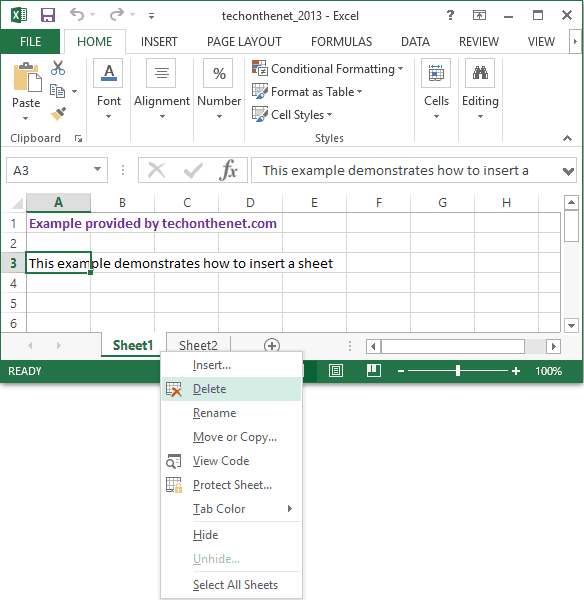5 Ways to Delete Multiple Excel Sheets Quickly

When working with extensive Excel workbooks that have numerous sheets, it can become a laborious task to delete these sheets one by one. Fortunately, Excel provides several efficient methods for deleting multiple sheets quickly, thus saving time and streamlining your workflow. Here are five effective ways to delete multiple Excel sheets at once.
1. Using Right-Click Context Menu

This method is straightforward and best suited when you can see all the sheets you want to delete:
- Right-click on any of the sheet tabs you want to delete.
- Select Delete from the context menu. This will bring up a warning dialog asking if you want to delete the selected sheets.
- Click OK to proceed with deleting all selected sheets.

2. Using Keyboard Shortcuts

Keyboard enthusiasts will find this method handy:
- Press Alt + E to open the Edit menu.
- Press L to select Delete.
- Then press O for OK when prompted to delete the sheet(s).
- To select multiple sheets:
- Hold down the Ctrl key and click on the sheets you want to delete.
3. VBA Macro to Delete Multiple Sheets

If you frequently need to delete sheets or if you’re dealing with a large number of sheets, automating the process with a VBA macro can be very efficient:
Sub DeleteSheets()
Dim ws As Worksheet
For Each ws In Worksheets
If ws.Name <> “Sheet1” Then
ws.Delete
End If
Next ws
End Sub
This macro will delete all sheets except for “Sheet1”. Here’s how to use it:
- Open the Visual Basic Editor with Alt + F11.
- Insert a new module and paste the above code.
- Close the editor and run the macro from the Developer tab by clicking Macros, selecting DeleteSheets, and then clicking Run.
💡 Note: This script deletes all sheets except for “Sheet1”. Be cautious with the sheet names you’re excluding.
4. Using Power Query

Power Query can be leveraged to manage and delete sheets, although it’s less straightforward than other methods:
- Go to the Data tab and select Get Data > From File > From Workbook to load your Excel file into Power Query.
- Once loaded, you can filter out the sheets you want to keep or use a script to remove sheets based on conditions.
- Load the transformed data back into Excel, effectively removing any sheets not included in the query.
5. Using Excel’s Quick Access Toolbar (QAT)

Customize the Quick Access Toolbar to include a Delete Sheet command for quicker access:
- Right-click on the Ribbon.
- Select Customize Quick Access Toolbar.
- Choose Delete Sheet from the Excel options and add it to the QAT.
- Now you can select multiple sheets and click the QAT button to delete them.
By now, you understand various methods to delete multiple Excel sheets efficiently. Each technique has its place, depending on your specific needs:
- The right-click method for small to medium tasks.
- Keyboard shortcuts for speed and efficiency.
- VBA macros for large datasets or regular tasks.
- Power Query for sophisticated data management.
- QAT for frequent operations.
Choosing the right method will save you time and reduce errors associated with manual deletion. Always remember to back up your data before performing any significant operations on your workbook.
Can I undo the deletion of multiple Excel sheets?

+
Unfortunately, Excel does not provide an “undo” feature for deleted sheets. Once sheets are deleted, they are removed permanently. Always ensure you have backups or use a version control system if you’re working with critical data.
Is there a way to delete sheets that match specific criteria?

+
Yes, with VBA. You can write a script to delete sheets based on conditions like sheet name patterns or contents within cells of the sheets.
What should I do if my Excel file crashes while deleting sheets?

+
If Excel crashes during a sheet deletion process, try to reopen your file in Safe Mode (hold Ctrl when launching Excel) and recover any unsaved work from AutoRecovery files if available. If your file size is very large, consider deleting sheets in smaller batches or using a macro to prevent overwhelming Excel’s processing capabilities.



